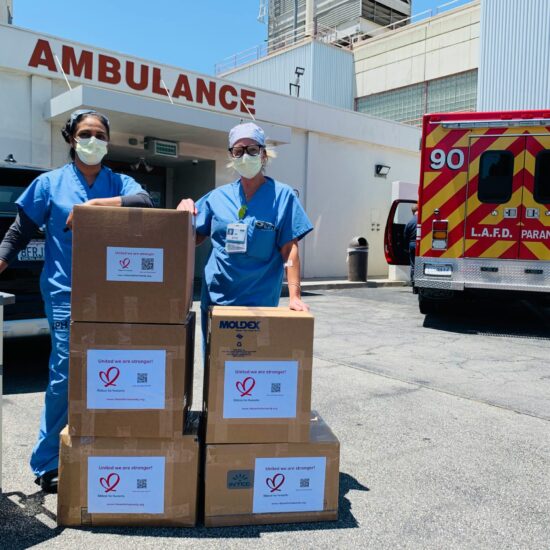In their article, “If Patients Only Knew How Often Treatments Could Harm Them,” for The New York Times last week, Austin Frakt and Aaron E. Carroll discuss a recently published systematic review out of JAMA Internal Medicine. This study looked at the gap between what patients think will help them, and what will actually harm them. The original article suggests that patients choose treatments with unrealistic expectations because they are uninformed. Clinicians should inform them, and help them face reality.
Frakt and Carroll tease out many points from this loaded conclusion, largely centering on their opening line: “If we knew more, would we opt for different kinds and amounts of health care?” While their facts are on-point, I have a problem with their, and the study’s information-based fix.
Although it’s a sticky place for a registered nurse to independently initiate conversations about the benefit of procedures at the bedside, we work with patients undergoing them every day. And when the doctors have left, we often see how these situations of unrealistic expectation involve far more than a patient’s knowledge. This article got me wondering what my nursing voice might add to its discussion.
Considering the author’s accusation that clinicians rarely quantify the benefit of tests and procedures to patients, I’ll break down one of their facts from my bedside nurse point-of-view, and explain how simply increasing patient knowledge might not always do the trick.
A single CT scan exposes a patient to the same amount of radiation as 300 chest X-rays, and carries with it a 1-in-2,000 chance of inducing a fatal cancer.
Let’s take a case I read about recently. A young man has a procedure with moderate sedation and is admitted overnight for observation. He hasn’t eaten since midnight the night before, and when he makes it to the unit, dinner is over. He’s drowsy, starved and a little nauseous. After standing to walk to the phone, he passes out and lands on the floor, hitting his head on the way down.
A look into his chart shows that he has no bleeding problems, no comorbidities precluding him for a stroke, and his nurse assesses no neurological changes after his spill. The head bump was slight, but the doctor orders a CT scan just to be safe.
Does this patient need one? Likely, no. If he waited with close monitoring by a nurse, he’d probably suffer no effects and save himself the cost of those extra rays. But he’s young, it’s hospital policy, and nobody wants to miss a potentially life-threatening side effect of his accident.
Technically, the test isn’t really appropriate, and is largely done out of institutional fear. Whether the test’s main benefit is to the patient or the institution, is where Frakt and Carroll’s information-fix argument falls short – even if the patient was comprehensively informed, he’ll likely choose to accept this CT scan, which for him, is a low-benefit-high-risk test, because of the fear of the unknown. This is not a jump into unrealistic expectations, and despite all factors, additional info on outcomes would probably change little.
On the other hand, look at my grandmother: She’s 97, and recently told my father that she may have swallowed her dental partial. A Chest x-ray showed no partial, but did show a small mass on her lung. Her PA was willing to do a CT scan as the next logical step, but because of my grandmother’ age, left the decision up to my family. We talked to each other, we talked to my grandmother, and she decided the test was unnecessary.
This time, the CT was clinically indicated, and low-risk, but technically invalid. While my grandmother might suffer medical harm from her decision not to proceed with an investigation, her personal definition of harm excludes her from this test. In her case, the decision was largely her own, and although her inclusion of the test may have helped her clinically, my grandmother’s realistic view had less to do with the information her clinician provided, than the information he didn’t provide.
Finally, there’s the situation of the deathly ill woman in the ICU. Initially presenting with a large stroke, she developed an infection that led to ventilator dependency and very low blood pressure. The medical team believes the patient will not benefit from further aggressive measures, but they’re on the cusp of talking with the family about her prognosis because they have suspicion that the woman has suffered further brain damage. So, they order a CT scan as a last piece of evidence to make their case.
This CT scan will not change any proactive treatment for this woman; if her stroke is found to have worsened, the team’s treatment will not change. It is done to show the family that the woman is in fulminant organ failure, and her condition is irreversible. This CT scan will not benefit this woman, and in fact, it will likely put her at higher risk because of the transport to and from the procedure in her acute state. But, the test is done in order to help the family accept her condition. In a way, the very test, not the information surrounding its benefit or harm, is the solution to unrealistic expectations.
The authors of this article are correct – patients must know the risks and benefits of procedures they asked to undergo. But the risks are often not contained to numbers and evidence, as much as the nuance of each, individual situation. And while I defer to provider judgement before giving my individualized assessment of risky procedures to patients and their families, I do believe a bedside view of this study is imperative to understanding the gap between its data and our reality.








